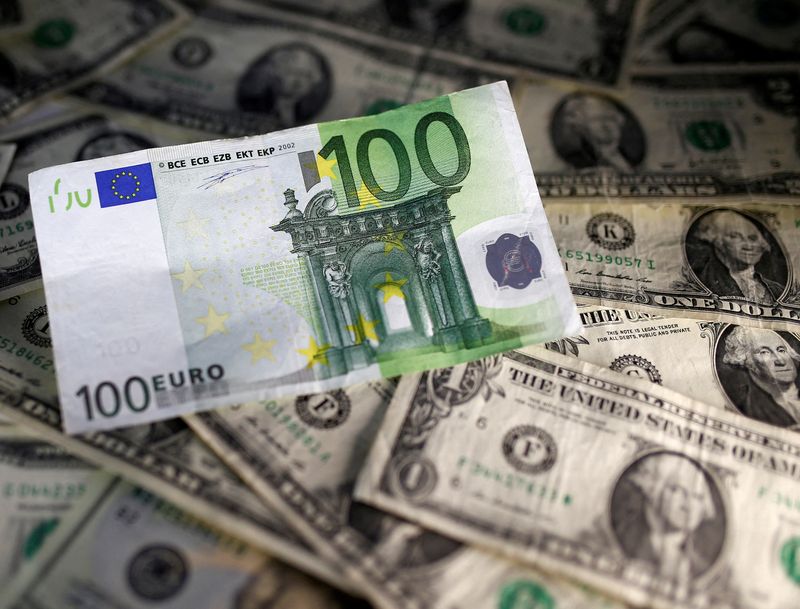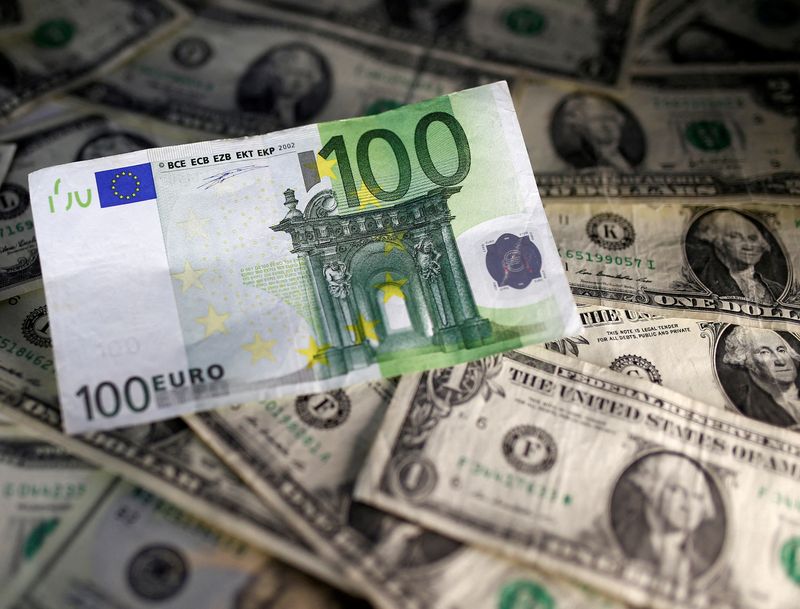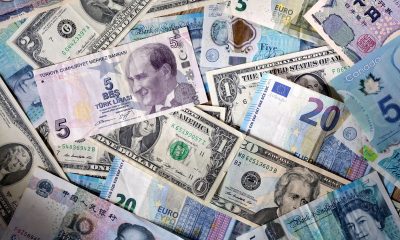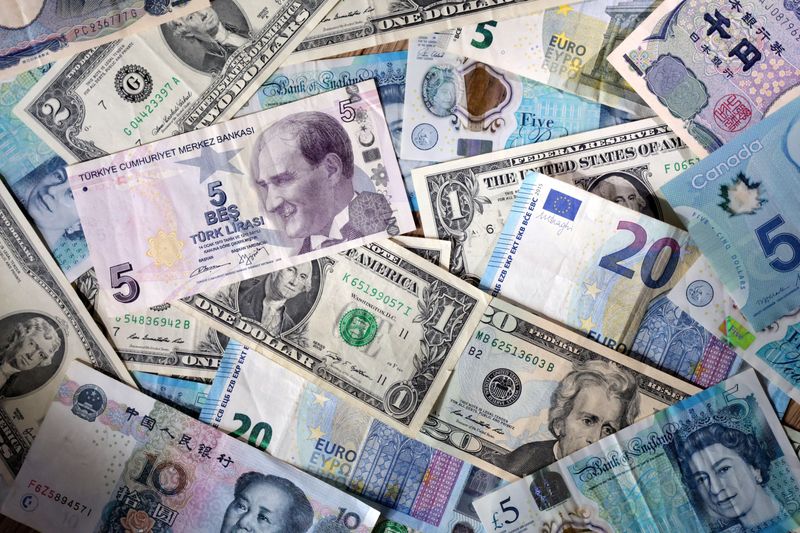Forex
Analysis-Euro’s bruising leaves global investors on edge

By Naomi Rovnick and Dhara Ranasinghe
LONDON (Reuters) -As the euro heads for its worst month since early 2022, analysts warn that a wild ride in the currency could be the next source of global market volatility after gyrations in Japan’s yen sparked a bout of cross-asset turmoil in August.
Europe’s single currency has slumped by just over 3% against the dollar in November. It is now teetering towards the key $1 mark, pressured by U.S. President-elect Donald Trump’s proposed trade tariffs, euro zone economic weakness and an escalating Russia/Ukraine conflict, just as U.S. growth bets lift U.S. stocks and the dollar.
France’s political woes are another potential headwind, with French consumer confidence at a five-month low and the fate of the new government and its budget at risk.
Investors and currency traders, however, are divided about what comes next because the dollar is also vulnerable to inflationary tariffs and government debt increases shaking faith in U.S. markets and the economy.
This uncertainty could increase if the euro drops further, raising the threat level for unexpected currency shifts that could upend highly popular so-called Trump trades, which bank on the euro falling as U.S. stocks rise, analysts said.
“We’ll get volatility because people will start to think: Are we breaking through (euro-dollar) parity or will it snap back?” Societe Generale (OTC:) head of FX strategy Kit Juckes said.
“The minimum we will see is more debate in both directions about the euro and I don’t trust these extraordinarily high levels of cross-asset correlations to continue.”
August’s market rout began with yen-dollar swings that caught hedge funds betting against the Japanese currency off guard and swelled into stock market selling to fund margin calls.
Regulators have warned about market fragility to similar events when popular market narratives rapidly shift, because of high levels of leverage in the system.
“If we crash through (euro-dollar) parity we’ll be having those kinds of conversations again,” Juckes said.
SPILLOVERS
The euro-dollar is the world’s most actively traded currency pair and rapid exchange rate shifts can disrupt multinationals’ earnings and the growth and inflation outlook for nations that import commodities and export goods priced in dollars.
“The euro is a benchmark,” Barclays (LON:) global head of FX strategy Themos Fiotakis said, meaning trade sensitive nations such as China, South Korea and Switzerland could allow their currencies to weaken against the dollar if the euro dropped further so they can compete with euro zone exports.
Britain’s pound, down just over 2% against the dollar this month to around $1.26, is highly sensitive to euro moves, he added.
Market sensitivity to the euro-dollar rate has also risen after what currency strategists said was a rush by traders into options contracts that combine bets on cross-asset outcomes from Trump’s policies, such as the euro weakening and the S&P rising.
“We’ve seen a lot of people trying to invest in (these) conditional outcomes,” Fiotakis said, which could raise the correlations between currency moves and wider markets.
Investors were underestimating that risk, UBS strategist Alvise Marino said.
A gauge of investor demand for protection against near-term euro-dollar swings is trading around 8%, well below a level of almost 14% when the euro last slumped below $1 in October 2022.
“Realised volatility in FX is likely to be high, and certainly higher than markets are pricing in,” Marino said.
He is recommending clients hedge against currency swings via derivatives contracts that pay out if euro volatility is higher a year from now.
SPLIT VIEWS
Long term asset managers, meanwhile, are deeply divided on where the euro and the dollar go from here, underscoring how this crucial exchange rate could be set for a bumpy ride in coming months.
“We are looking for the euro to go to 99 cents by the middle of the next year,” said Willem Sels, global chief investment officer at HSBC’s private banking and wealth unit.
But Vincent Mortier, chief investment officer of Amundi, Europe’s largest asset manager, said euro zone rate cuts could boost euro zone business and consumer spending and lift the euro to $1.16 by late 2025.
Traders in the fast-moving currency options market were late on Tuesday pricing a 56% probability of the euro being higher than its current level of about $1.047 at year-end, despite big banks like JP Morgan and Deutsche Bank (ETR:) saying a move to $1 could happen, depending on tariffs.
Rising bets on the European Central Bank lowering rates by half a percentage point to 2.75% next month have weakened the euro.
But a popular market narrative that Trump’s aggressive growth policies and import taxes will boost U.S. inflation and keep rates high and the dollar mighty is also starting to fray.

Eurizon SJL Capital CEO Stephen Jen said the U.S. risked a so-called bond vigilante moment if the White House’s lenders in the $27 trillion Treasury market push debt costs higher to try and curb tax cuts funded by excessive borrowing.
A consequent tightening of financial conditions “should allow a soft landing in the U.S. economy and lower long-term interest rates,” he said, making the dollar overvalued.

 Forex3 years ago
Forex3 years agoForex Today: the dollar is gaining strength amid gloomy sentiment at the start of the Fed’s week

 Forex3 years ago
Forex3 years agoUnbiased review of Pocket Option broker

 Forex3 years ago
Forex3 years agoDollar to pound sterling exchange rate today: Pound plummeted to its lowest since 1985

 Forex3 years ago
Forex3 years agoHow is the Australian dollar doing today?

 Cryptocurrency3 years ago
Cryptocurrency3 years agoWhat happened in the crypto market – current events today

 World3 years ago
World3 years agoWhy are modern video games an art form?

 Commodities3 years ago
Commodities3 years agoCopper continues to fall in price on expectations of lower demand in China

 Economy3 years ago
Economy3 years agoCrude oil tankers double in price due to EU anti-Russian sanctions


























